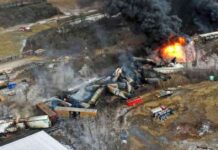So far, all questions about the background to the attack on the Nord Stream pipelines have been ironed out by the investigative authorities with reference to national interests. Now, of all people, a private data analysis company has found a hot lead.
In the case of the most serious attack of this year, the investigators could make a step forward. It’s about the explosions that destroyed three of the four Nord Stream gas pipelines at the end of September. Pictures from the crime scene support the theory of a deliberate demolition. But who was it?
In the search for an answer, there is now a first hot lead: shortly before the explosions, two so-called “dark ships” apparently crossed the area.
This is reported by the US computer magazine “Wired” and refers to analyzes by the company SpaceKnow. The data analysis company based in New York and Prague has identified two large ships on satellite images, which, however, had switched off all transmitters that are used to locate and identify ships. They cruised just before the explosions at the scene.
According to SpaceKnow, there are two ships, each up to 130 meters long. “They had their signals turned off, meaning there was no information about their movement, and they were trying to hide their location information and general information from the world,” explains SpaceKnow CEO Jerry Javornicky.
In order to prevent collisions on the high seas, the so-called “Automatic Identification System” (AIS) is actually mandatory worldwide for ships over a certain size.
It sends a signal that can be followed online not only by other ships and authorities, but also by interested parties. In this way, the whereabouts of most ships can be tracked in real time. The ships in question had turned off this device.
SpaceKnow nevertheless managed to detect the ships thanks to a special technology. To do this, the company uses an analysis method that it operates with the European Space Agency (ESA). Using the so-called SAR method, satellites can scan the sea with electromagnetic waves.
The resulting representations are similar to photographs. SpaceKnow specializes in using software to make so-called “dark ships” recognizable on such recordings.
What in itself serves to combat illegal fishing or track down smugglers, for example, could now provide clues to the pipeline terrorists.
Otto Tabuns, the director of the NGO Baltic Security Foundation, told Wired magazine that it is rare for a ship to turn off its transmitters in Baltic Sea waters unless there are “secret targets”.
Normally, the detection of such ships leads to a search operation. The next ports to be called would have to carry out so-called port state controls. Inspectors went on board and can arrest the ships. Whether that happened is currently one of the unanswered questions.
It’s not the only question. It is also unclear, for example, whether the fourth tube of the pipeline system is still intact. Russia claims yes, the federal government – asked about it by the AfD – considers “negative effects” of the explosions on the fourth tube to be likely and tends to say no.
How important is Russian gas for Germany’s energy supply? How big is the dependency on Russian imports really? Answers to the most pressing questions at a glance.
The federal government answered the questions from the left-wing member of the Bundestag Sahra Wagenknecht about NATO ships that were in the area at the time of the attack: After careful consideration, it came to the conclusion that information cannot be given for reasons of public interest.
“The requested information is subject to the restrictions of the Third Party Rule, which concerns the international exchange of information by the intelligence services.” The rule states that intelligence information does not have to be made transparent.
Immediately after the attack, German politicians accused Russia of sabotage. Russia, on the other hand, claims the United States and Britain were behind the attack.
In fact, US Secretary of State Antony Blinken described the aftermath of the attack as a “huge opportunity” for the US, which could now deliver more gas to Europe. So far, however, there is no evidence of any allegation.
Gas Pipeline – Nord Stream 1: Facts on the cost, volume and route of the pipeline
The article “Do “Dark Ships” lead to the perpetrators? Hot lead in Nord Stream investigations” comes from WirtschaftsKurier.















